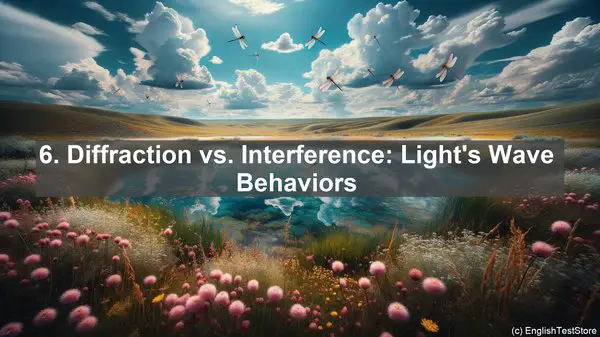Introduction: The Importance of Clear Communication
As students of photonic engineering, we’re constantly exposed to a vast array of technical terms. However, some words, despite their apparent similarity, have distinct meanings and applications. Misunderstanding or misusing these terms can lead to confusion and even errors in our work. That’s why today, we’re diving into the top 10 commonly confused words in photonic engineering. Let’s get started!
1. Wavelength vs. Frequency: The Fundamental Difference
When discussing light, we often encounter the terms ‘wavelength’ and ‘frequency.’ While they’re related, they represent different aspects. Wavelength refers to the distance between two consecutive points of a wave, while frequency denotes the number of wave cycles per second. Understanding this distinction is crucial, as it impacts various aspects of photonic engineering, from signal transmission to device design.
2. Reflection vs. Refraction: Light’s Bending Behaviors
Reflection and refraction are two phenomena that occur when light interacts with a surface. Reflection involves the bouncing back of light, while refraction refers to its bending as it passes through a medium. These behaviors have significant implications, such as in the design of optical lenses or the understanding of how light interacts with different materials.
3. Absorption vs. Attenuation: Light’s Energy Loss
When light encounters a material, it can either be absorbed or attenuated. Absorption refers to the complete assimilation of light energy by a material, while attenuation signifies its partial reduction. This distinction is vital in various applications, such as fiber optics, where minimizing attenuation is crucial for efficient signal transmission.

4. Dispersion vs. Distortion: Light’s Signal Behavior
Dispersion and distortion are two phenomena that affect light signals. Dispersion refers to the spreading out of a signal, often due to variations in wavelength, while distortion involves changes in the signal’s shape or integrity. Both can have detrimental effects on data transmission, making their understanding essential for designing robust communication systems.

5. Monochromatic vs. Polychromatic: Light’s Color Composition
When we think of light, we often associate it with colors. Monochromatic light consists of a single color or wavelength, while polychromatic light comprises multiple colors. This differentiation is crucial in various applications, such as spectroscopy or display technologies, where the accurate representation of colors is essential.
6. Diffraction vs. Interference: Light’s Wave Behaviors
Diffraction and interference are phenomena that occur when light encounters obstacles or passes through narrow slits. Diffraction involves the bending or spreading out of light waves, while interference refers to their interaction, resulting in patterns of constructive or destructive interference. These behaviors have been harnessed in numerous applications, from optical gratings to the famous double-slit experiment.
7. Luminescence vs. Fluorescence: Light’s Emission Processes
Luminescence and fluorescence both involve the emission of light, but they differ in their excitation processes. Luminescence is the general term for light emission, while fluorescence specifically refers to the absorption of light at one wavelength and its subsequent emission at a longer wavelength. Understanding these processes is crucial in fields like optoelectronics or bioimaging.
8. Scattering vs. Absorption: Light’s Interaction with Particles
When light encounters particles or impurities in a medium, it can either be scattered or absorbed. Scattering involves the deflection of light in various directions, while absorption refers to its assimilation by the particles. These phenomena have implications in fields like atmospheric optics or the study of nanoparticle suspensions.
9. Intensity vs. Irradiance: Quantifying Light’s Power
Intensity and irradiance are terms used to quantify the power of light. Intensity refers to the total power passing through a specific area, while irradiance specifically denotes the power incident on a surface. These measures are crucial in various applications, from laser safety calculations to solar energy harvesting.
10. Mode vs. Modal: Understanding Light’s Propagation
In waveguides or optical fibers, the term ‘mode’ is often used to describe the different possible paths or patterns of light propagation. ‘Modal,’ on the other hand, refers to anything related to these modes. Understanding these terms is essential for designing and optimizing waveguide structures or analyzing the behavior of light in complex optical systems.
